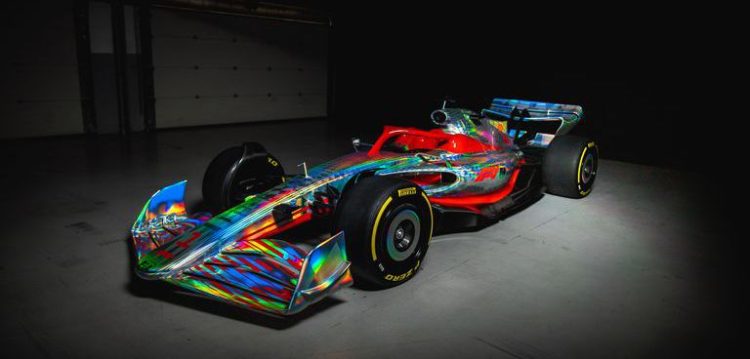Unveiling the Extravagance: Exploring the Enigmatic World of Formula 1 Car Prices

Formula 1, the pinnacle of motorsport, is synonymous with speed, precision, and cutting-edge technology. The sleek and powerful machines that grace the tracks during Grand Prix races are a testament to human engineering prowess. However, behind the curtain of excitement and adrenaline lies a lesser-known aspect—the staggering price tags attached to Formula 1 cars. In this article, we will delve into the intricate details of Formula 1 car prices, unraveling the complexity of the financial investments required to participate in this elite racing series.
The Evolution of Formula 1 Cars:
Before dissecting the costs associated with Formula 1 cars, it’s essential to understand the evolution of these high-performance vehicles. Formula 1 has witnessed significant technological advancements over the years, with each season bringing innovations that push the boundaries of what’s possible in automotive engineering.
From the sleek and aerodynamically efficient chassis to the state-of-the-art power units, every component of a Formula 1 car is a result of meticulous research, development, and testing. Teams invest heavily in wind tunnel testing, computational fluid dynamics, and advanced materials to gain a competitive edge.
The Components and Their Costs:
Chassis:
The backbone of any Formula 1 car is its chassis—a complex structure designed to maximize aerodynamic efficiency while ensuring driver safety. Constructed from lightweight materials such as carbon fiber, the chassis is a significant contributor to the overall cost of the car. The intricate design, coupled with the need for constant improvements, makes the chassis a multi-million-dollar component.
Power Unit:
The heart of a Formula 1 car is its power unit, consisting of the internal combustion engine, energy recovery systems, and other ancillary components. These power units are hybrid systems that harness both traditional combustion and electrical energy. The development and maintenance of these power units incur substantial costs, with teams often spending tens of millions annually to stay competitive in the power unit arms race.
Aerodynamics:
Aerodynamics play a crucial role in the performance of a Formula 1 car. The intricate wings, diffusers, and other aerodynamic elements are meticulously designed to generate downforce and reduce drag. The constant pursuit of aerodynamic excellence requires significant financial investments in wind tunnel testing, computational simulations, and the fabrication of complex components.
Tires:
Formula 1 cars rely on specialized tires that can withstand extreme forces while providing optimal grip. The cost of these high-performance tires adds to the overall budget, especially considering the quantity required for an entire season. The tire supplier, typically Pirelli, collaborates with teams to develop compounds tailored to different tracks and weather conditions.
Team Expenditure:
Apart from the inherent costs associated with the components, Formula 1 teams face substantial operational expenses. These include but are not limited to:
Personnel:
Formula 1 teams employ a vast array of professionals, including engineers, aerodynamicists, mechanics, and support staff. The salaries and operational costs of maintaining such a skilled workforce contribute significantly to the overall expenditure.
Research and Development:
Continuous innovation is the lifeblood of Formula 1. Teams invest heavily in research and development to stay ahead of the competition. The expenses incurred in designing and testing new technologies contribute significantly to the financial burden.
Testing and Simulations:
Before hitting the race track, Formula 1 cars undergo extensive testing and simulations to fine-tune their performance. The costs associated with track testing, wind tunnel sessions, and advanced simulations are substantial and are integral to a team’s pursuit of perfection.
Travel and Logistics:
The global nature of Formula 1 means teams must travel to various continents throughout the season. The logistics of transporting cars, equipment, and personnel to different locations incur substantial expenses, including accommodation, transportation, and operational costs at each race venue.
Formula 1 Car Prices: A Staggering Reality:
While the exact price of a Formula 1 car can vary based on the team, its resources, and technological advancements, it is widely acknowledged that the cost of fielding a competitive car is astronomical. Estimates suggest that the annual budget for a mid-tier Formula 1 team can range from $100 million to $200 million, with top-tier teams spending even more.
The relentless pursuit of performance, coupled with the sport’s competitive nature, has led to an arms race where teams spare no expense to gain an edge. The disparity in budgets between top teams and those further down the grid is a testament to the financial challenges faced by smaller outfits in their quest to compete at the highest level.
Conclusion:
Formula 1 car prices reveal a fascinating intersection of technology, innovation, and financial commitment. The cars that roar around the world’s most iconic circuits represent the pinnacle of automotive engineering, pushing the boundaries of what is possible in the pursuit of speed and performance.
While the financial investments required to participate in Formula 1 may seem staggering, they underscore the level of dedication and passion that teams bring to the sport. As Formula 1 continues to evolve, with sustainability and cost control at the forefront of discussions, the future may see changes in the financial landscape of this high-stakes racing series. Nevertheless, the allure of Formula 1 car prices will always be an intrinsic part of the mystique surrounding this exhilarating motorsport.
How much does a Formula 1 car cost?
-
- The cost of a Formula 1 car can vary widely, with estimates suggesting that it can range from $10 million to $20 million or more. The exact price depends on factors such as the team’s budget, technological advancements, and sponsorship deals.
What contributes to the high cost of Formula 1 cars?
- The high cost is primarily attributed to the advanced technology, precision engineering, and constant innovation required to stay competitive. Components like the chassis, power unit, aerodynamics, and specialized tires contribute significantly to the overall expense.
How often do Formula 1 teams update their cars, and does it impact the cost?
- Formula 1 teams continuously update their cars throughout the season and between seasons to stay competitive. The regular updates contribute to the cost, as teams invest in research, development, and testing to incorporate the latest technologies and improvements.
Do all Formula 1 teams have the same budget for their cars?
- No, Formula 1 teams operate with different budgets. Top-tier teams often have significantly larger budgets compared to mid-tier and smaller teams. The disparity in budgets can impact the level of technology and resources available to each team, influencing their competitive standing.
How much do Formula 1 teams spend on research and development?
- Formula 1 teams invest heavily in research and development, with a substantial portion of their budget allocated to staying at the forefront of technology. Estimates suggest that top teams can spend tens of millions annually on R&D alone.
What role does sponsorship play in financing Formula 1 teams and their cars?
- Sponsorship is a crucial aspect of Formula 1 financing. Teams seek partnerships with sponsors to offset the high costs associated with the sport. Sponsorship deals can involve branding on the car, driver’s apparel, and team merchandise, providing a significant source of revenue.
How do Formula 1 teams manage operational costs during the racing season?
- Operational costs, including personnel salaries, travel, logistics, and testing, are managed through the team’s overall budget. Teams strategize to optimize their resources and balance the financial demands of participating in a global racing series.
Are there efforts to control costs in Formula 1?
- Yes, there have been ongoing discussions and initiatives within Formula 1 to control costs and promote financial sustainability. Measures such as budget caps and restrictions on certain expenses aim to level the playing field and make the sport more accessible to a broader range of teams.
How much do Formula 1 teams spend on testing and simulations?
- The costs associated with testing and simulations are substantial. Teams conduct extensive testing, both on track and in wind tunnels, to refine their cars’ performance. The expenses cover equipment, personnel, and facility usage.
Are there any changes expected in the future regarding Formula 1 car prices?
- Formula 1 is actively exploring ways to make the sport more financially sustainable. Discussions on budget caps, resource restrictions, and other measures are ongoing, with the goal of creating a more level playing field and ensuring the long-term viability of the sport.
- The costs associated with testing and simulations are substantial. Teams conduct extensive testing, both on track and in wind tunnels, to refine their cars’ performance. The expenses cover equipment, personnel, and facility usage.
- Yes, there have been ongoing discussions and initiatives within Formula 1 to control costs and promote financial sustainability. Measures such as budget caps and restrictions on certain expenses aim to level the playing field and make the sport more accessible to a broader range of teams.
- Operational costs, including personnel salaries, travel, logistics, and testing, are managed through the team’s overall budget. Teams strategize to optimize their resources and balance the financial demands of participating in a global racing series.
- Sponsorship is a crucial aspect of Formula 1 financing. Teams seek partnerships with sponsors to offset the high costs associated with the sport. Sponsorship deals can involve branding on the car, driver’s apparel, and team merchandise, providing a significant source of revenue.
- Formula 1 teams invest heavily in research and development, with a substantial portion of their budget allocated to staying at the forefront of technology. Estimates suggest that top teams can spend tens of millions annually on R&D alone.
- No, Formula 1 teams operate with different budgets. Top-tier teams often have significantly larger budgets compared to mid-tier and smaller teams. The disparity in budgets can impact the level of technology and resources available to each team, influencing their competitive standing.
- Formula 1 teams continuously update their cars throughout the season and between seasons to stay competitive. The regular updates contribute to the cost, as teams invest in research, development, and testing to incorporate the latest technologies and improvements.
- The high cost is primarily attributed to the advanced technology, precision engineering, and constant innovation required to stay competitive. Components like the chassis, power unit, aerodynamics, and specialized tires contribute significantly to the overall expense.
- The cost of a Formula 1 car can vary widely, with estimates suggesting that it can range from $10 million to $20 million or more. The exact price depends on factors such as the team’s budget, technological advancements, and sponsorship deals.






